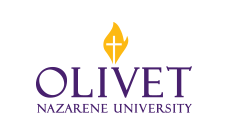Faculty Mentor(s)
Dr. Willa Harper
Project Type
Student Scholarship
Scholarship Domain(s)
Scholarship of Discovery, Scholarship of Interdisciplinary Integration
Presentation Type
Presentation
Abstract
Presentation Location: Warming House, Olivet Nazarene University
Abstract
The eNOS pathway, found in the endothelium of blood vessels, is a key regulator of nitric oxide levels in the circulatory system. The pathway is controlled through several positive and negative feedback loops [2]. The cofactor tetrahydrobiopterin (BH4) is a major control point in this pathway and under conditions of stress can be reduced into the dihydrobiopterin (BH2) [2,6,7,8,9]. When the reduced form is predominant, the pathway produces reactive oxygen species (ROS) rather than nitric oxide, causing stress and damage to the vessels [6,7,8,9]. In this study, different treatments were studied to determine which is most effective in restoring BH4 levels in the eNOS pathway of bovine aortic endothelial cells (BAECs). Nitric oxide supplementation was the main focus of this study and was tested as a stand-alone treatment and as a combined treatment along with a BH4 donor drug, sapropterin dihydrochloride. Following the two treatments, only the BAECs given the nitric oxide donor drug showed levels of BH4 higher than the untreated control cells. The cells treated with 25 mM nitric oxide donor drug and 2.5 mM BH4 donor drug showed levels of BH4 that were most similar to the untreated control cells with a concentration of approximately 27 mM BH4.
Permission Type

This work is licensed under a Creative Commons Attribution-No Derivative Works 4.0 License.
Included in
Amino Acids, Peptides, and Proteins Commons, Biochemistry Commons, Biological Factors Commons, Chemical Actions and Uses Commons, Enzymes and Coenzymes Commons, Molecular Biology Commons
Mediation of the uncoupled eNOS pathway following oxidative stress using tetrahydrobiopterin and nitric oxide donor drugs to restore tetrahydrobiopterin concentration
Other
Presentation Location: Warming House, Olivet Nazarene University
Abstract
The eNOS pathway, found in the endothelium of blood vessels, is a key regulator of nitric oxide levels in the circulatory system. The pathway is controlled through several positive and negative feedback loops [2]. The cofactor tetrahydrobiopterin (BH4) is a major control point in this pathway and under conditions of stress can be reduced into the dihydrobiopterin (BH2) [2,6,7,8,9]. When the reduced form is predominant, the pathway produces reactive oxygen species (ROS) rather than nitric oxide, causing stress and damage to the vessels [6,7,8,9]. In this study, different treatments were studied to determine which is most effective in restoring BH4 levels in the eNOS pathway of bovine aortic endothelial cells (BAECs). Nitric oxide supplementation was the main focus of this study and was tested as a stand-alone treatment and as a combined treatment along with a BH4 donor drug, sapropterin dihydrochloride. Following the two treatments, only the BAECs given the nitric oxide donor drug showed levels of BH4 higher than the untreated control cells. The cells treated with 25 mM nitric oxide donor drug and 2.5 mM BH4 donor drug showed levels of BH4 that were most similar to the untreated control cells with a concentration of approximately 27 mM BH4.


